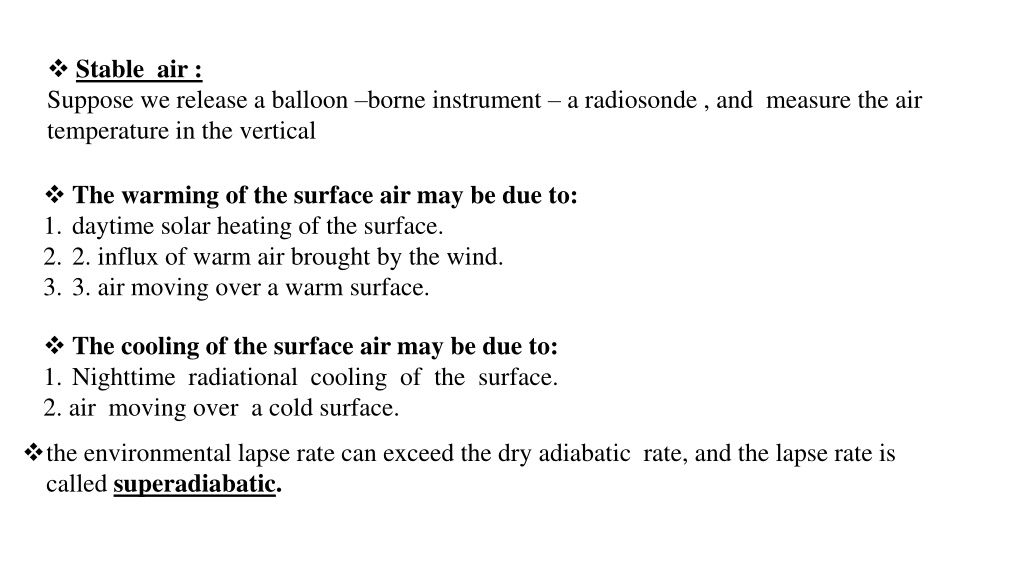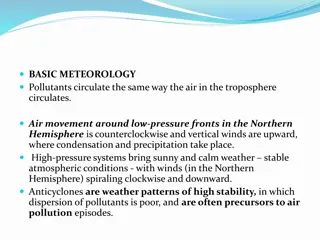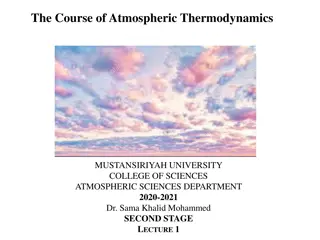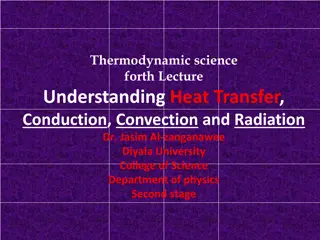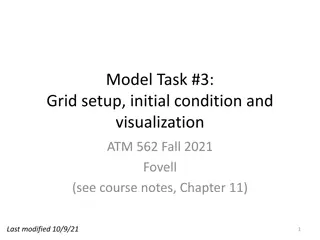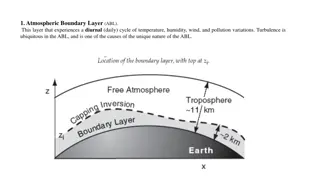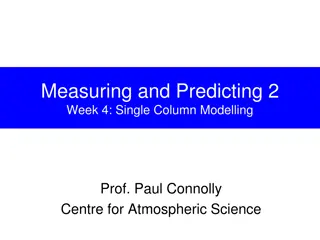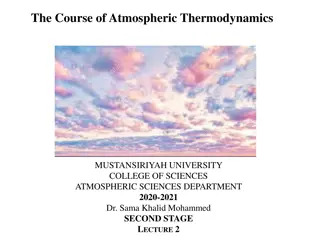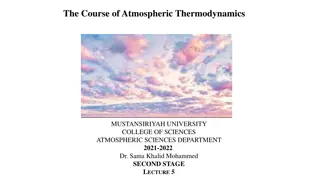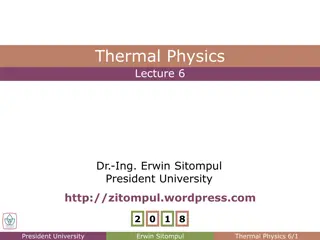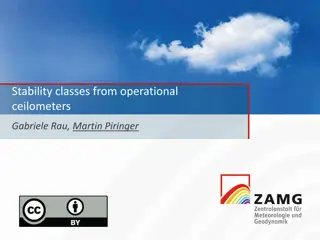Understanding Atmospheric Stability and Adiabatic Processes
Atmospheric stability is crucial in determining weather conditions. Different processes such as adiabatic cooling play a significant role in the vertical movement of air masses. Understanding the environmental lapse rate, moist and dry adiabatic rates, and the concept of conditional instability helps in predicting cloud formation and weather patterns. Factors influencing stability include daytime heating, wind influence, and radiational cooling. By analyzing these factors, one can better comprehend atmospheric behavior and forecast changes in weather conditions.
- Atmospheric Stability
- Adiabatic Process
- Environmental Lapse Rate
- Moist Adiabatic Rate
- Conditional Instability
Download Presentation

Please find below an Image/Link to download the presentation.
The content on the website is provided AS IS for your information and personal use only. It may not be sold, licensed, or shared on other websites without obtaining consent from the author. Download presentation by click this link. If you encounter any issues during the download, it is possible that the publisher has removed the file from their server.
E N D
Presentation Transcript
Stable air : Suppose we release a balloon borne instrument a radiosonde , and measure the air temperature in the vertical The warming of the surface air may be due to: 1. daytime solar heating of the surface. 2. 2. influx of warm air brought by the wind. 3. 3. air moving over a warm surface. The cooling of the surface air may be due to: 1. Nighttime radiational cooling of the surface. 2. air moving over a cold surface. the environmental lapse rate can exceed the dry adiabatic rate, and the lapse rate is called superadiabatic.
The level in the atmosphere where the air parcel, after being lifted, becomes warmer than the air surrounding it cause the release of latent heat (the atmosphere is unstable) , is called the level of free convection. conditional instability means that, if unsaturated stable air is somehow lifted to a level where it becomes saturated, instability. conditional instability exists whenever the environmental lapse rate is between the dry and moist adiabatic rates Static Stability : the word static means having no motion this type of stability does not depend on wind . air is statically unstable when less dense air the flow responds to this instability by supporting convective circulations such as thermals that allow buoyant air to rise to the top of the unstable layer , thereby stabilizing the the fluid . thermals also need some trigger mechanism to get them started . in the real boundary layer , there are so many triggers ( hills , buildinings , trees , dark fields, or other perturbations to the mean flow ) .
Dynamic Stability : The word dynamic refers to motion , hence , dynamic stability depends in part on the winds . even if the air is statically stable , wind shears may be able to generate turbulence dynamically . The static instability , combined with the continued dynamic instability , causes each wave to become turbulent . clear air turbulence ( CAT ) , often occur above and below strong wind jet , such as the nocturnal jet and the planetary scale jet stream .. these regions of CAT have large horizontal extent ( hundreds of kilometers in some cases ) , but usually limited vertical extent ( tens to hundreds of meters ). Temperature inversions produce very stable atmospheric conditions in which mixing is greatly reduced. When an inversion exists near the ground, stratus, fog, haze, and pollutants are all kept close to the surface
1- What is an adiabatic process? 2- How would one normally obtain the environmental lapse rate ? 3- Why are the moist and dry adiabatic rates of cooling different? 4- How can the atmosphere be made more stable ? more unstable ? 5- If the atmosphere is conditionally unstable , what does this mean ? what condition is necessary to bring on instability ? 7- Why are cumulus clouds more frequently observed during the afternoon ? 8- What type of cloud would you most likely expect to see in a stable atmosphere ? in an unstable atmosphere . 9- Where would you expect the moist adiabatic rate to be greater in the tropics or near the north pole ? explain why? 10- What changes in weather conditions near the earth s surface are needed to transform an absolutely stable atmosphere in to absolutely unstable atmosphere ?
